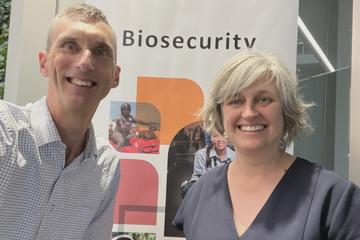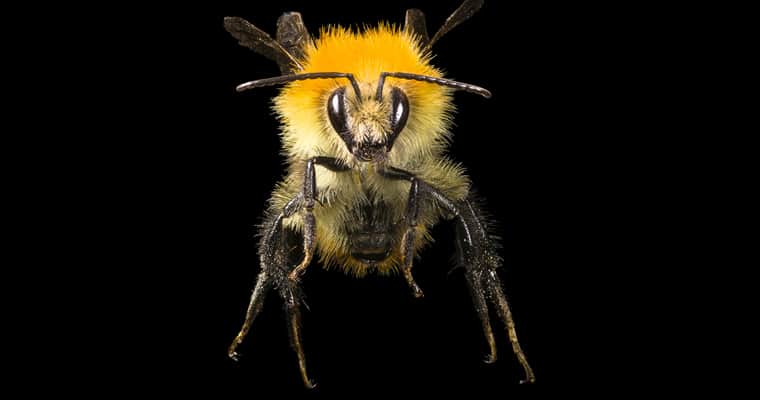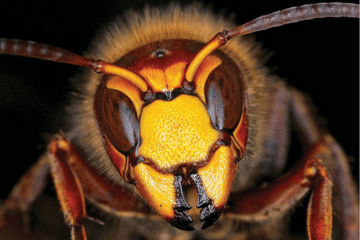The agricultural and environmental biosecurity office has had budgets slashed, biosecurity funding is on the table, the National Biosecurity Strategy is moving forward, and the Decade of Biosecurity has a new national coordinator.
CEBO downgrading and belt tightening
It’s only March but 2023 has started with worrying news of a restructure and severe belt tightening at the Department of Agriculture, Fisheries and Forestry.
There are new controls on the recruitment of new staff, training and travel and biosecurity spending is being seriously scrutinised. We expect this to reduce the already disappointing attention given to environmental biosecurity risks. Some concerns stem from the costs of creating separate environmental and agriculture agencies after the federal election. Beforehand these functions were within a single organisation.
In a major setback for the environment, a department restructure released in February showed the Chief Environmental Biosecurity Officer had been downgraded. The position was previously at the first assistant secretary level, mirroring the other two chiefs – Chief Veterinary Officer and Chief Plant Protection Officer. The Chief Environmental Biosecurity Officer has now been reclassified as assistant secretary level, reporting to the plant protection officer. This leaves two chiefs and one sub-chief.
Being subsumed into plant health functions will impact on the environmental focus of biosecurity decision-making at the senior level and weaken the status of the Chief Environmental Biosecurity Officer. The Invasive Species Council has long been concerned that environmental risks have been poorly prioritised in a biosecurity system focused on diseases and pests impacting on agriculture and this restructure will be a significant setback since the role was created by the coalition government in 2018 as a result of our advocacy.
In a related change, Dr Robyn Cleland resigned as Chief Environmental Biosecurity Officer at the end of December when she retired from the public service after a distinguished career. The Invasive Species Council was impressed with Robyn’s two-year stint in the environmental biosecurity role where she enthusiastically championed the needs of the environment within biosecurity circles and consolidated the work of inaugural environmental biosecurity chief, Ian Thompson.
The incoming Chief Environmental Biosecurity Officer is Dr Bertie Henneke. Bertie has a botany and agricultural academic background and has held senior roles in the federal government including heading up the Australian Bureau of Agricultural and Resource Economics and Sciences (ABARES) and leading plant biosecurity policy.
We look forward to supporting Bertie in this new role and will push for the role’s first assistant secretary status to be reinstated.
Biosecurity strategy moving forward
There was much promise that things would be different when agriculture and biosecurity ministers adopted the National Biosecurity Strategy in August 2022. Top of the priority list were stronger partnerships, a shared biosecurity culture, boosted capacity to respond to outbreaks and sustainable investment.
Six months on and the stakeholder Implementation Committee has met twice, providing feedback to proposed quick wins and the process for developing an implementation committee (due by July 2023) and action plan. The implementation plan will define a new governance structure and implementation framework while the action plan will spell out specific efforts and a monitoring framework.
The Invasive Species Council is a member of the implementation committee, along with state and federal government reps, biosecurity industry and RDC reps, Australian Council of Trade Unions, Australian Food and Grocery Council, National Farmers’ Federation, NRM Regions Australia, Northern Australian Indigenous Land and Sea Management Alliance and Freight and Trade Alliance. The next implementation committee meeting will be held on 9 March 2023.
There’s still no change on the ground for now, but we are hoping these reforms deliver the promised changes quickly. Expectations are high and the biosecurity risks are growing. We will know in the coming months whether our federal, state and territory biosecurity agencies can deliver the changes so desperately needed.
A new phase for Decade of Biosecurity
With the 2020s well underway, so too are plans to make this decade – the Decade of Biosecurity – mean something big for biosecurity. The implementation plan that has been under development since October 2022 is close to finalisation after a February national online workshop attended by about 50 people. This has led to a narrower focus, and a call for lead partners. Key projects are a national communications program, a network of biosecurity champions, a general biosecurity surveillance network, a national biosecurity response network and a partnership agreement.
The implementation plan will be finalised in March and launched in the second quarter of 2023. We are also pleased to welcome on board Emily Mellor as our new Decade of Biosecurity coordinator.
The Decade of Biosecurity is a collaborative initiative involving NRM, landcare, farmer, industry, community, biosecurity preparedness bodies and research groups, together with state, territory and federal biosecurity agencies. Invasive Species Council CEO Andrew Cox chairs the steering committee. See biosecurity2030.org.au to sign the biosecurity2030 pledge and learn what’s happening.
Funding for biosecurity
The need to source new funds for biosecurity has been a prominent topic since the 2017 biosecurity review found current funding could not keep up with growing risks and proposed a small levy on incoming shipping containers. After the container levy was abandoned in 2020 due to importer resistance and insufficient support from the agriculture sector, a replacement income source needed to be found.
The federal Labor government is going to address this major deficiency after being elected on a promise to ‘deliver long-term, sustainable funding’ for strengthened biosecurity. A discussion paper presenting the full suite of options was released for comment in November 2022. There hasn’t been much action since, presumably with more detail to emerge in the 2023-24 federal budget in May.
You can see the Invasive Species Council submission to the discussion paper here [add link when it is on our website or else delete this sentence].
Ensure you’re subscribed to Feral Herald for future insider updates on biosecurity.




